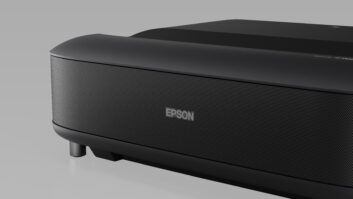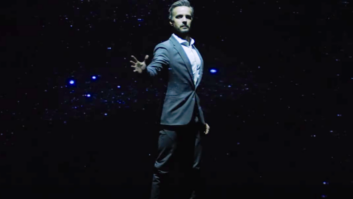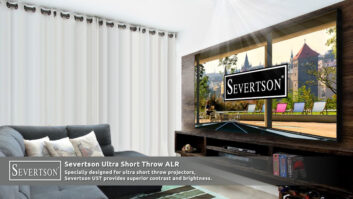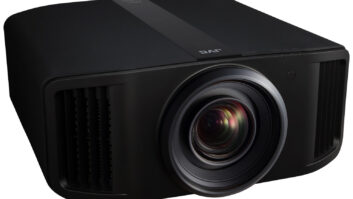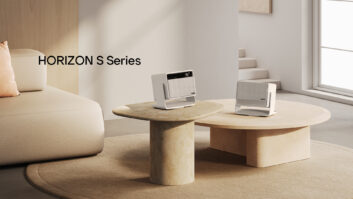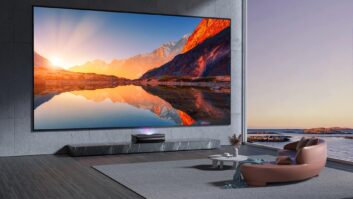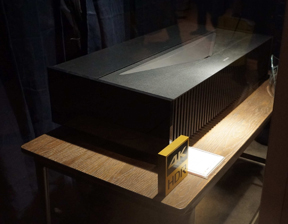
Projection TV has long been a part of the TV and video display world. Indeed, many of the first consumer TV sets were a form of rear projection, with the image from a CRT optically “folded” to appear on a screen. Front projectors have long been, and continue to be, a mainstay of the “custom home theater” business. However, for mainstream consumer use, the once vibrant projection rear projection business faded away as the rise of flat-panel sets made the deep RPTV cabinets obsolete.
However, one form of projection continued to see a resurgence was growth: Ultra Short Throw (UST) projectors. With advances in projection technology thanks to laser-driven, rather than bulb- or LED-based models, UST models are fueling new projector sales as valid competition to large size flat panel sets.
There is no formal definition for what is “ultra” short throw. Perhaps the best way to describe the category is to think of a projection unit that sits literally right up against the screen, no more than twelve or eighteen inches away. By comparison, a “short throw” projector is typically two to three feet from the screen; picture the short throw sets that have become popular for class room use where they are often mounted above, and close to, a white board.
By allowing large, bright, and now 4K images, UST lets the consumer have a retractable screen, if they wish, or in other cases eliminate the logistical and architectural difficulties of physically getting a large (85-inch and up) flat screen into a room and mounting it on the wall. Often the size of a carry-on bag, or smaller, UST fills what has become more than a niche market, and the new models shown earlier this month at CES pushed that agenda.
Updating on the first 4K, UST models, Sony brought their new VPL-VZ1000ES. At $24,999 it is half the price of the initial VPL-GTZ1, first shown last year. Clearly defining the category, it can throw an image up to 120 inches diagonally while sitting about six inches from the screen. Also key in the price category is its HDR-10 capability, although availability of Dolby Vision, featured on the new Sony OLED and some of their LCD models, has yet to be announced.
Promoting UST as part of a full home theater system, Hisense showed their H990 Laser Cast TV, which includes a 4K, laser-drive, UST with a 100-inch screen and a five-speaker audio package that also includes a subwoofer. The $13,000 package with 2,700 lumen light output is set for Summer delivery.
Other 4K UST models of note included those from Changhong, Haier and Optoma. Optoma’s UST was claimed to throw an image up to 140 inches at just over two feet thanks to a 0.18 throw ratio. Delivery is said to be in Q3 with an MSRP under $20,000.
Along with the 4K UST models at CES, UST models with 1080p and lower resolution were also very much in evidence. While some might say that we’re living in a 4K world, two short-throw demos caught our eye with a similar concept. For the price of a single 4K UST, three UST or standard ST models are used to create an immersive, three-screen gaming environment. To make the “cockpit” effect more realistic, LG’s UST/gaming demo added a large flat screen to simulate an aircraft instrument panel.
While standard throw 4K and HD projectors were also in evidence, particularly with large, bright, 4K/HDR images for high-end home theater, the presence of UST and ST models uncovered a growing market segment with significant potential.





